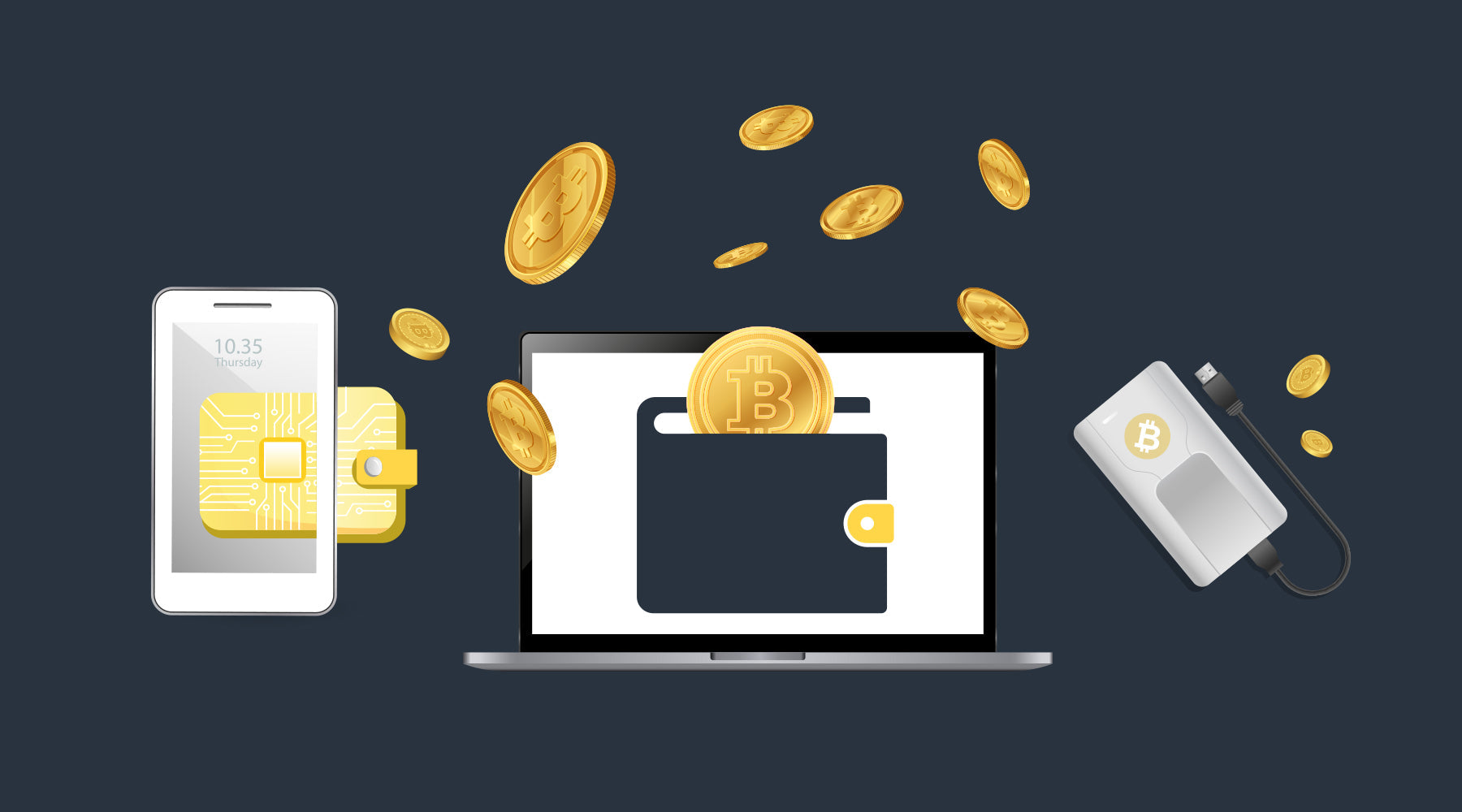Key Takeaways
- Crypto wallets let you send, receive, and manage digital assets like Bitcoin, Ethereum, and Solana.
- Wallets don’t actually hold your crypto – they store the private keys that prove you own it.
- Hot wallets (mobile or desktop) are connected to the internet – great for convenience, less ideal for long-term storage.
- Cold wallets (hardware wallets) stay offline – slower to use, but far more secure.
- Custodial wallets are managed by third parties; non-custodial wallets give you full control of your assets.
What Is a Crypto Wallet?
A crypto wallet is your personal control panel for digital assets. It’s how you check balances, send and receive coins, connect to decentralised apps (DApps), and store NFTs.
Your wallet doesn’t actually store coins – those live on the blockchain. Instead, your wallet keeps the private keys that unlock access to those coins. Think of it like a digital keychain – lose the keys, and you lose your coins – there’s no “Forgot Password” link in crypto.
Each wallet has a public address you can share to receive funds, and a private key (like your password) that should never be shared.
Most wallets also generate a seed phrase, usually 12 or 24 words, which acts as a master backup. Anyone with that phrase can re-create the wallet and move its funds, so it’s critical to keep it private and offline.
Wallets come in many shapes and flavours – from sleek mobile apps and full-featured desktop programs to purpose-built hardware devices that live entirely offline. Each has its own balance of convenience and security. The key is knowing which one fits your style of investing.
Hot vs Cold – the First Big Divide
Before you dive into brands and features, it helps to understand one fundamental distinction. Wallets are generally grouped into hot and cold categories, depending on whether they connect to the internet.
Hot wallets, which include both mobile and desktop versions, stay online. They’re quick, handy, and great for everyday transactions, but that connection also makes them more exposed to cyber-risks.
Cold wallets, on the other hand, operate offline. They’re slower to use but far less vulnerable to hacking. Think of them as a digital equivalent of a safe deposit box – something you don’t access often, but you trust to protect what matters most.
Mobile Wallets – Crypto in Your Pocket
Mobile wallets are smartphone apps that make crypto feel as familiar as online banking. You can download one from your app store, set it up in minutes, and be ready to send or receive assets using QR codes or contactless scans.
They’re the most popular starting point for beginners because they combine simplicity with portability. Whether you’re buying your first token or paying a friend back in stablecoins, everything happens right from your phone.
However, this convenience comes with trade-offs. Because mobile wallets are connected to the internet and often used on personal devices, they’re only as secure as your phone itself. Malware, fake apps, and phishing messages can all pose risks if you’re not careful.
To stay safe, use only official wallet apps from trusted sources, set a strong passcode or biometric lock, and back up your seed phrase on metal or paper – never as a screenshot or note in the cloud.
Popular options like Trust Wallet, MetaMask, Phantom, and Zengo have made mobile self-custody more accessible than ever. They’re ideal for smaller balances, testing decentralised apps (DApps), or making quick transfers while on the move.
Desktop Wallets – More Power, More Control
Desktop wallets take things a step further. These are programs you install directly on your computer, giving you full control over your private keys and transaction data.
For users who like to dig deeper into crypto, desktop wallets often include advanced features such as multisignature support, custom fee control, and even direct integration with hardware wallets (Cold Wallets). They appeal to people who want a stronger sense of independence without giving up usability.
When you create a desktop wallet, it stores your encrypted key data – sometimes in a file called wallet.dat – on your local drive. Protecting this file is essential. If your computer is compromised or the file is deleted without a backup, access to your assets can vanish for good.
Before setting up a desktop wallet, make sure your device is clean: update your operating system, run antivirus software, and avoid installing unknown programs or browser extensions.
Veteran Bitcoiners swear by wallets like Electrum and Sparrow, both known for transparency and strong community reputations. Multi-asset wallets like Exodus or Guarda add a bit more polish and broader coin support, though some trade openness for design and convenience.
Desktop wallets hit a sweet spot between flexibility and control, making them a good choice for investors who manage several assets or trade regularly from a single machine.
Cold Wallets – Hardware-Level Peace of Mind
If mobile and desktop wallets are your everyday spending accounts, cold wallets are the vault. Also known as hardware wallets, these small physical devices keep your private keys completely offline. They only connect briefly – usually by USB or Bluetooth – to sign transactions, and even then, the private keys never leave the device.
Because they’re disconnected from the internet, hardware wallets are immune to online attacks, malware, or phishing attempts. That isolation makes them the go-to choice for long-term holders, SMSFs, and anyone serious about protecting substantial value.
Setting one up typically involves creating a PIN and writing down a recovery phrase. The device will then generate new wallet addresses whenever you need them. Brands like Ledger, Trezor, SafePal, and Tangem dominate the market, each with slightly different interfaces but the same underlying goal – keep your keys where hackers can’t reach them.
The main drawbacks? They’re less convenient for day-to-day use, and you’ll need to guard the device itself (and your recovery phrase) like treasure. Lose both, and recovery becomes impossible.
Still, for most security-conscious investors, a hardware wallet is the gold standard – a small upfront investment that buys a great deal of peace of mind.
Custodial vs Non-Custodial Wallets
When it comes to crypto wallets, the biggest difference isn’t always what they look like – it’s who holds the keys. Most wallets fall into one of two camps: custodial or non-custodial, and that distinction decides how much control you actually have over your assets.
Custodial wallets are managed by a third party, usually an exchange or online service. They hold your private keys for you, much like a bank holds your cash. The trade-off is convenience: you can reset your password, recover access if you lose your phone, and rely on their customer support. But it also means trusting their infrastructure, policies, and security. If the provider is hacked, goes offline, or freezes withdrawals, your crypto is effectively out of reach until they fix the issue.
Non-custodial wallets flip that model entirely. You hold the private keys and seed phrase yourself – no intermediaries, no backups on someone else’s server. This gives you true ownership and privacy, but also full responsibility. Lose your recovery phrase or share it accidentally, and there’s no support team that can bring it back.
Both models have their place. Custodial wallets suit beginners and frequent traders who value ease of use. Non-custodial wallets appeal to those who want full autonomy, transparency, and the peace of mind that comes from knowing the keys – and the crypto – are truly theirs.
How to Choose the Right Wallet
There’s no single “best” wallet; it depends entirely on how you use crypto. As a guide:
Many experienced users combine them: a hot wallet for day-to-day transactions and a cold wallet for long-term holdings. That layered approach keeps your main funds offline while leaving a small “spending balance” easily accessible.
The Final Buzz
Owning cryptocurrency isn’t just about buying coins; it’s about learning to hold them securely. A well-chosen wallet is your gateway to the decentralised world – and your first real act of self-custody.
So whether your crypto lives in your pocket, on your desktop, or inside a small piece of hardware, take the time to understand how it works and how it keeps your keys safe.
Lock it down, back it up, and rest easy knowing your assets are right where they belong – in your hands.
Stay safe. Stay smart. Be Crypto Safe.
Education is your best defence. Unlock member-only guides, checklists, and tools designed to protect your crypto, stay safe and be compliant.



